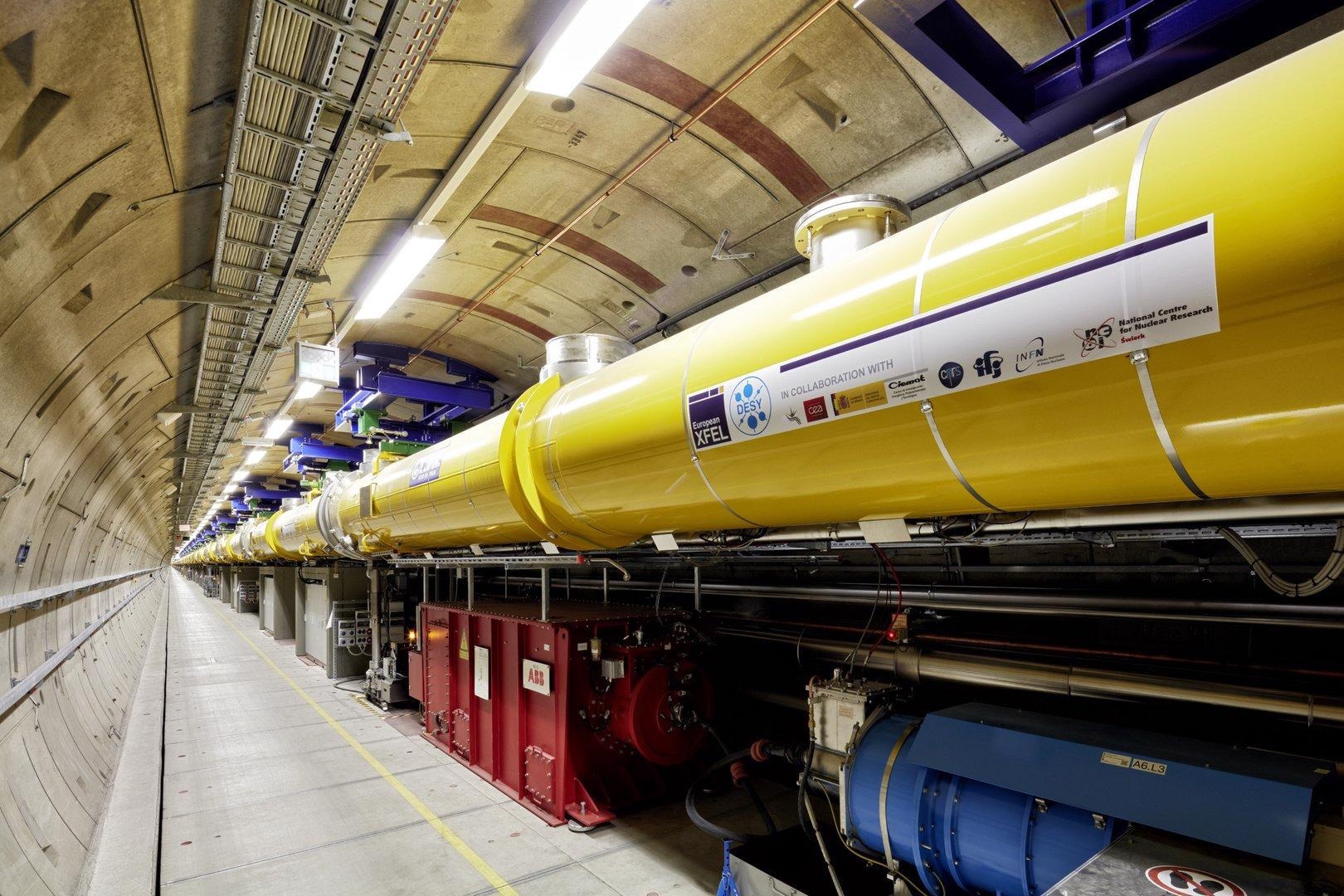At the European XFEL in Hamburg, investigators were able to produce polarized X-Rays with exceptional purity. Researchers from the Helmholtz Institute Jena, a branch of GSI, Friedrich Schiller University Jena, and the Helmholtz Center Dresden-Rossendorf participated in the experiments.
 The experiments took place at the European XFEL. Image Credit: © European XFEL/Heiner Müller-Elsner.
The experiments took place at the European XFEL. Image Credit: © European XFEL/Heiner Müller-Elsner.
The method is expected to be used to demonstrate that, under certain conditions, even vacuum behaves like material, as predicted by quantum electrodynamics.
The polarization of electromagnetic radiation explains how a wave oscillates in space. Lasers produce polarized radiation, which is different from ordinary electromagnetic radiation like sunlight. This is a crucial requirement for many experiments, ranging from solid-state physics to quantum optics.
Additional polarizers, like those being created at the Helmholtz Institute in Jena, have the goal of improving polarization purity even further. However, for a long time, the limit of a few 10-10, for example, out of ten billion photons, only a handful contain the unwanted polarization, could not be pushed any further. In 2018, Kai Schulze discovered that the divergence of synchrotron radiation is the reason for this limit.
Kai Schulze is the first author of the study. The research was published in the Physical Review Research journal.
So to get a further improvement in purity, we needed a source with better divergence. The commissioning of the European X-ray laser, European XFEL, in Schenefeld near Hamburg set the course for this.
Kai Schulze, Study First Author and Physicist, Helmholtz-Institut Jena
Kai Schulze guides the work on vacuum birefringence at HI Jena and is also responsible for related DFG research projects at the University of Jena.
Schulze and his team created an experiment set up at the European XFEL with researchers from the Friedrich Schiller University of Jena and the Helmholtz Center Dresden-Rossendorf, which set a new purity record of 8 × 10-11 thanks to special polarizer crystals, a very accurate alignment, and a stable setup.
This novel purity record has already facilitated a number of X-Ray quantum optics and charge distribution in solids experiments. The detection of so-called vacuum birefringence, on the other hand, is of particular interest.
Werner Heisenberg and Hans Euler explained the interaction of light with light in 1936, but it has yet to be directly observed on Earth.
Vacuum birefringence is currently the most promising effect to directly detect light-light interaction. In this process, the polarization of a sample beam changes when it collides in vacuum with a very intense second light beam.
Kai Schulze, Study First Author and Physicist, Helmholtz-Institut Jena
Schulze elaborates, “The vacuum thus acts like a birefringent crystal, which also affects the polarization; hence the name. The effect is extremely small, but grows with decreasing wavelength of the sample beam. Precise polarizers in the X-ray range therefore provide a good tool to detect the effect.”
According to Schulze, the High Energy Density instrument at the European XFEL would offer the perfect conditions for such an experiment in the future. The research group now has a setup that can detect even the tiniest polarization changes.
The discovery of vacuum birefringence would not only strengthen the foundations of quantum electrodynamics, but it might also reveal previously unknown elementary particles if deviations from theoretical expectations emerge (such as axions, or millicharged particles).
Schulze says, “We hope to be able to launch the first experiments in the next few years.”
The phenomenon’s detection would be important for future experiments at the FAIR particle accelerator center.
If we succeed in measuring vacuum birefringence, this will help interpret the measurement data from FAIR. Among other things, vacuum polarization will play a role there, which is closely linked to vacuum birefringence.
Kai Schulze, Study First Author and Physicist, Helmholtz-Institut Jena
Journal Reference:
Schulze, K. S., et al. (2022) Towards perfectly linearly polarized x-rays. Physical Review Research. doi.org/10.1103/PhysRevResearch.4.013220.